This herbal healing salve recipe is one every medicinal herb cabinet should have. Perfect for healing skin abrasions and wounds, it's filled with natural antibiotic oils and is extremely soothing for scrapes, cuts and burns. This is very similar to my herbal salve recipe for dry skin, but with healing medicinal herbs included!
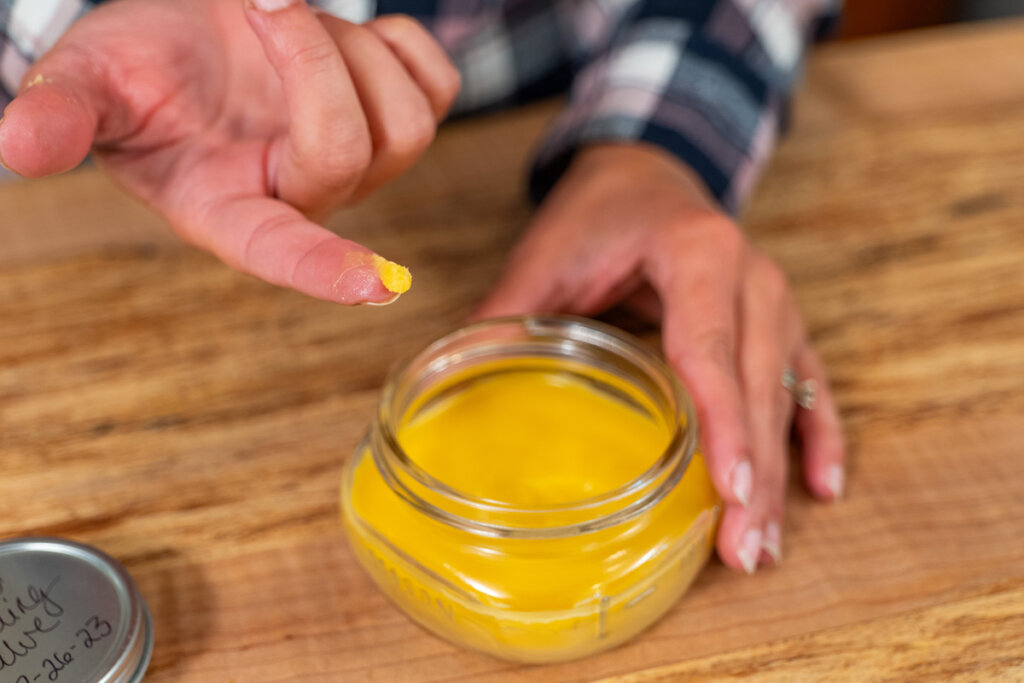
While I love cultivating my medicinal herb garden, I also love foraging for wild medicinal plants to stock my medicine cabinet with alternative medicine like the pioneers once used.
Every year, I gather calendula flowers and infuse them into homemade calendula oil to make this healing salve. Just like my herbal wound healing salve and my comfrey poultice come together very quickly.
Why You'll Love This Recipe
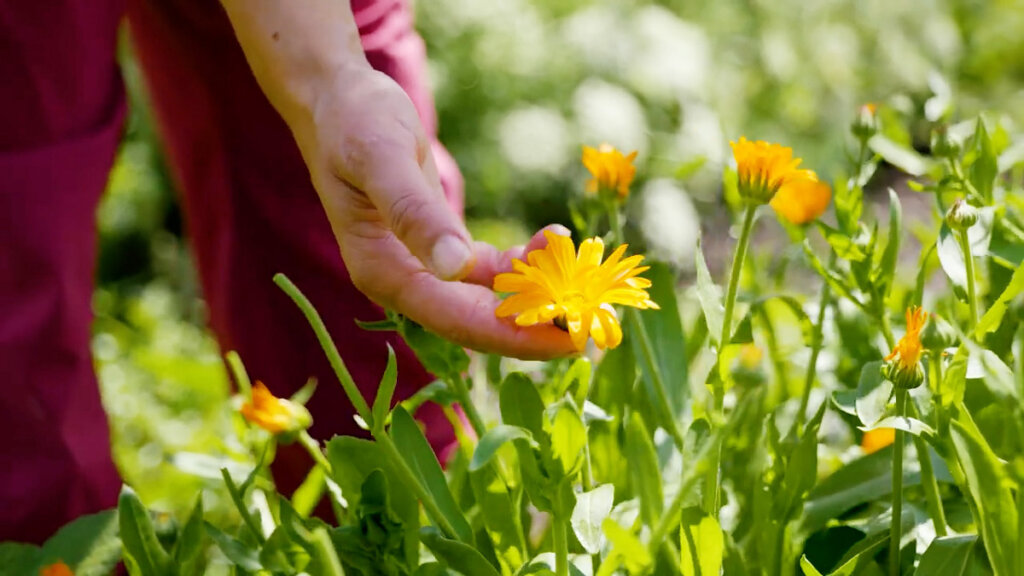
It's important to note that I am not a certified medical practitioner. This post is not intended to diagnose or treat but is for informational purposes only. Please contact your healthcare professional before introducing new herbal and natural remedies into your wellness routine.
One of the beautiful things about a homemade natural salve recipe is you can customize it for your specific needs (anyone else a bit of a control freak that way?).
The homesteader in me loves that I can grow the herbs right outside the back door to make this nourishing and healing salve. It's like rendering and using your own lard for skin care. I LOVE IT!
The essential oils are optional, but I chose them specifically for their healing properties. (Source) You can make any homemade salve recipes without the essential oils and just use herbal-infused oils (like this calendula oil).
- Natural Ingredients: Call me crazy, but I like being able to pronounce all the ingredients in something that's going on my skin. This recipe is filled with ingredients that are easy to find (and you may already have on hand).
- Easy to Make: This tutorial isn't complicated at all. With just a few steps and some hands-off waiting time, you'll have one more herbal remedy in your medicinal herb cabinet.
- Better than Vaseline: A few years back, I had to have an Atypical mole removed four different times. While the wound was healing, it needed to be kept moisturized, and the dermatologist's office recommended using Vaseline, which is a petroleum-based product. Instead, I chose to reach for this herbal wound healing salve, and I genuinely believe it helped speed the healing process.
Why I Don't Use Petroleum-Based Products
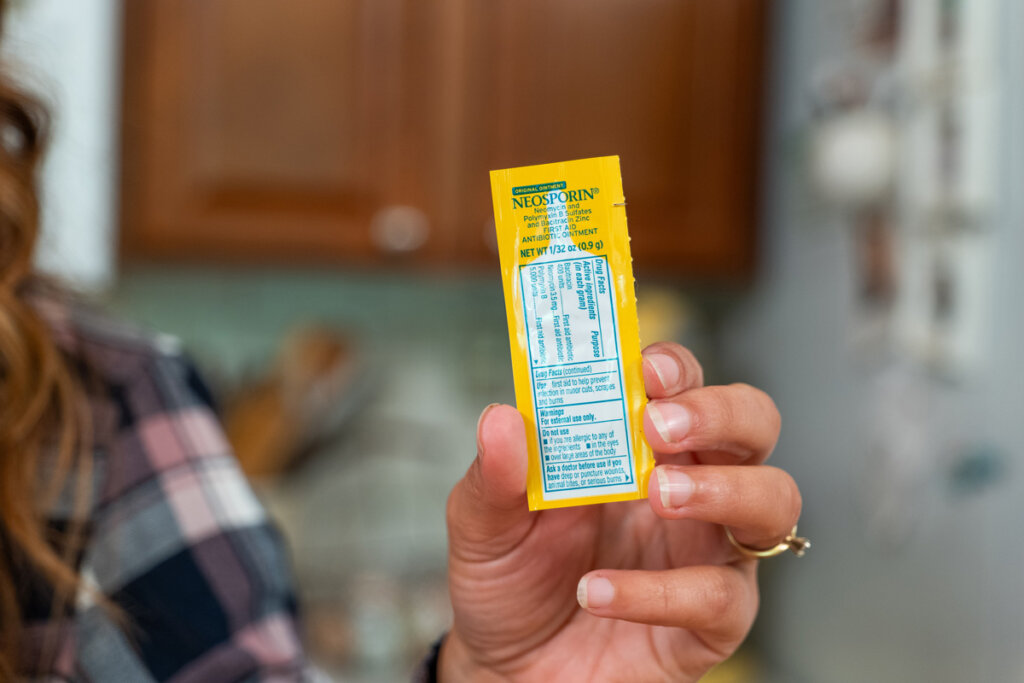
I happen to be allergic to Neosporin. If I use it, I'll break out in red blisters, which just adds more pain to an already painful situation.
Furthermore, it's a petroleum-based product that we try to avoid in our home. One study states, “[crude] oils contain compounds with possible endocrine-disrupting potential, some of them acting via the hormone receptors”. (Source)
What does this mean? It means it can disrupt and affect the estrogen process in your body. I already struggle with estrogen dominance, and for that reason alone, I do not use petroleum products.
Petroleum jelly doesn't have any healing properties to it either. If I'm going to put something on a wound, I want it to have properties that not only moisturize my skin (not just act as a barrier) but can help my body promote healing. (Source)
Supplies Needed
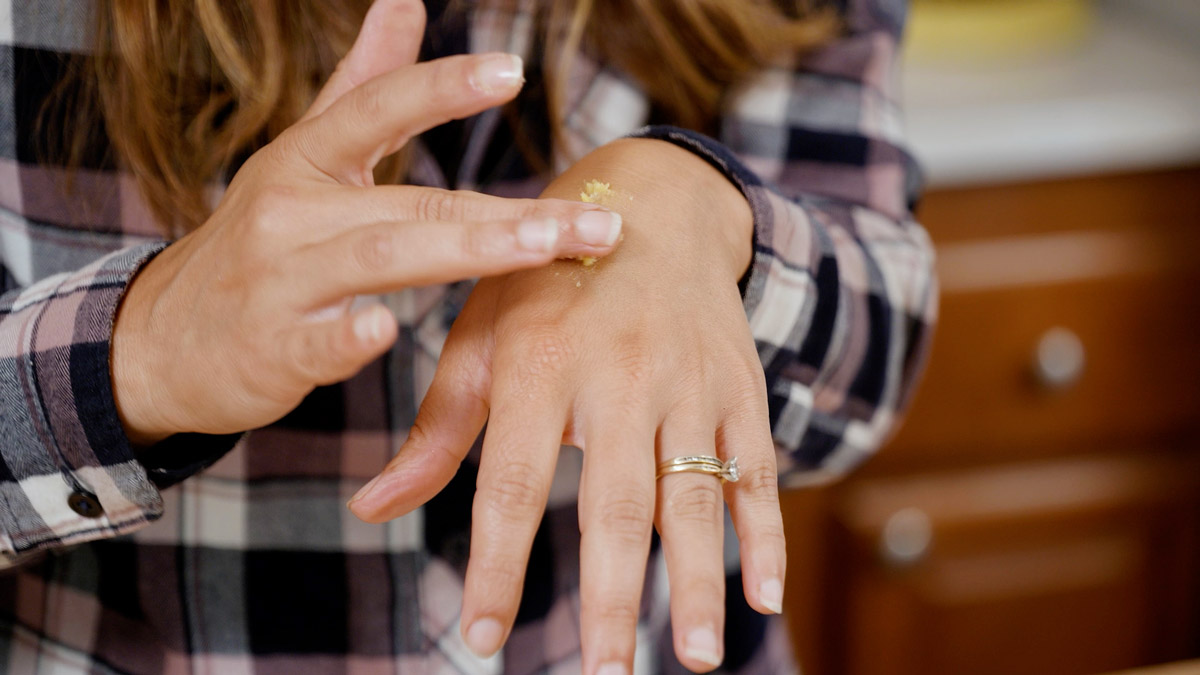
The basic salve recipe is taken straight from my book Home and Hand Made, where I have an entire section devoted to herbs and using them in your natural medicine cabinet.
- Food scale– When making homemade salves, soaps, and ointments, it's best to do so by weight and not volume. I've used this food scale for almost a decade now.
- Heat-Proof Bowl – I like to use a glass Pyrex measuring cup devoted solely to making salves, butters, soaps and candles. That way, I don't have to worry about getting it too clean between batches because I know the ingredients are all safe for each of my homemade recipes.
- Double Boiler – If you don't have a double boiler, you can create one with a pot and water on the stove. Your pot needs to be large enough to fit your bowl either inside (like I do) or so that a bowl can fit over the top of the pot without falling inside.
- Container – you'll need a container to pour your finished salve in. For healing salve on the go, these tins are great. For at-home use, I prefer to use glass. These wide-mouth 4-ounce Mason jars make it easy to get the salve out.
Ingredients Needed
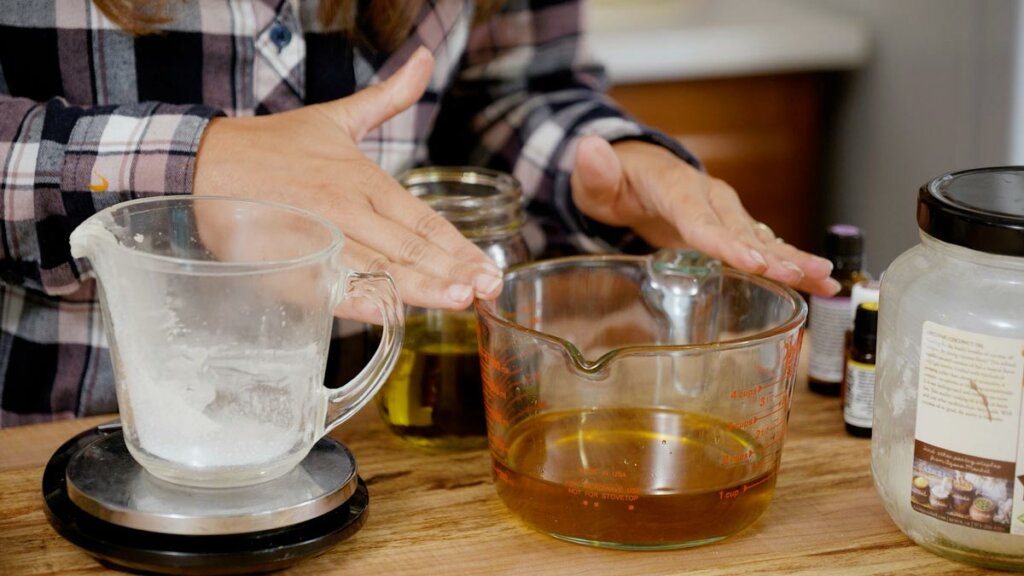
A complete list of ingredients with measurements can be found in the recipe card at the bottom of this post.
- Beeswax – Beeswax is necessary to maintain a thicker consistency at room temperature. Without it, the salve would run down your skin and won't stay right where you want it. I like to buy beeswax pastilles instead of a brick of beeswax. They're easier to measure without the hard work of having to grate the block. You can buy beeswax pastilles here.
- Herbal Infused Oil – I use equal amounts of my homemade calendula oil and my homemade lavender oil.
- Coconut Oil – Coconut oil has many great properties for our skin. (Source)
- Essential Oils (optional) – I use Plant Therapy essential oils because I trust their products (they have third-party testing to verify the quality of their oils).

- Tea Tree (Melaleuca) Oil – Tea tree is antimicrobial which makes it a great addition to a healing salve. (Source)
- Geranium Oil – Another great option for this oil. Geranium oil is antiseptic, aids in wound healing, and inhibits the inflammatory responses in the skin. (Source)
- Frankincense Oil – Frankincense is anti-inflammatory and helps promote healing. (Source)
- Lavender Oil – Lavender is one essential oil every home medicine cabinet should have. It has antioxidant and antimicrobial properties and is very soothing for the skin. (Source) (Source) (Source)
How to Make a Healing Salve
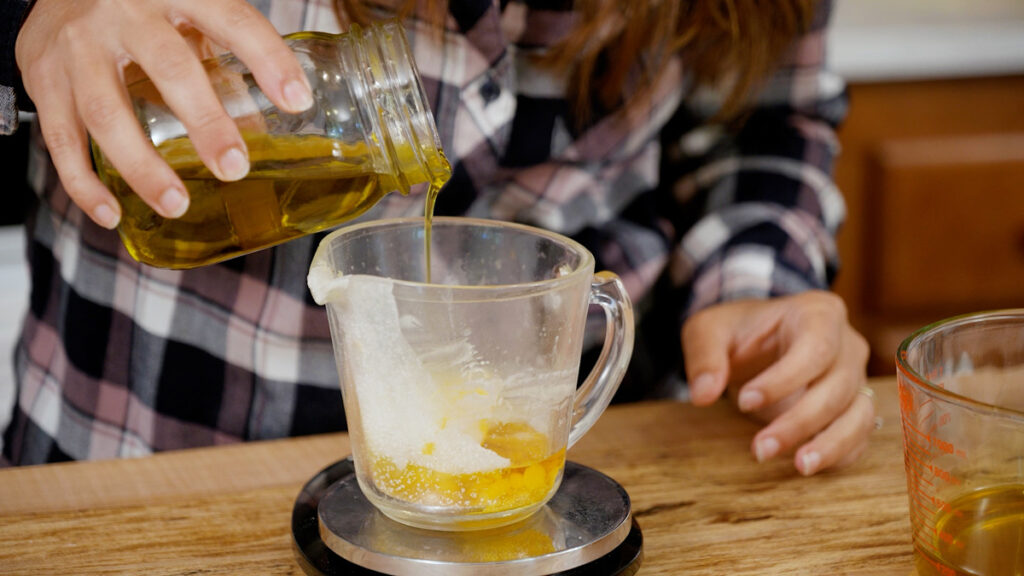
Step 1: Using a food scale, weigh out your beeswax and oils.
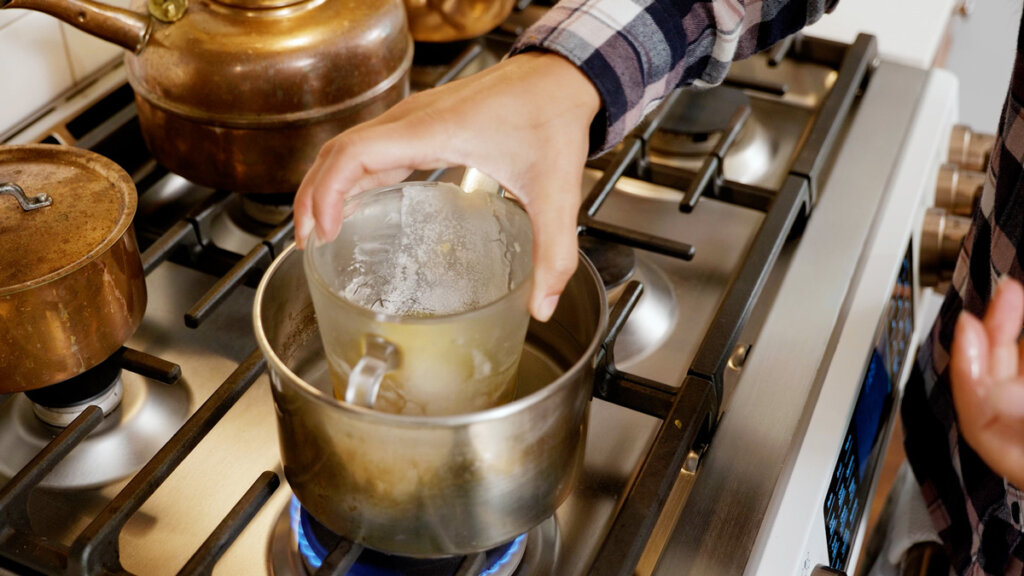
Step 2: Prepare a double boiler. I like to use a metal canning band on the bottom of a pot. Bring the water to just below a simmer.
Carefully place your heat-safe container with your healing salve ingredients into the pot, making sure the water comes up around the bottom few inches of the container.
Heat until all ingredients are melted.
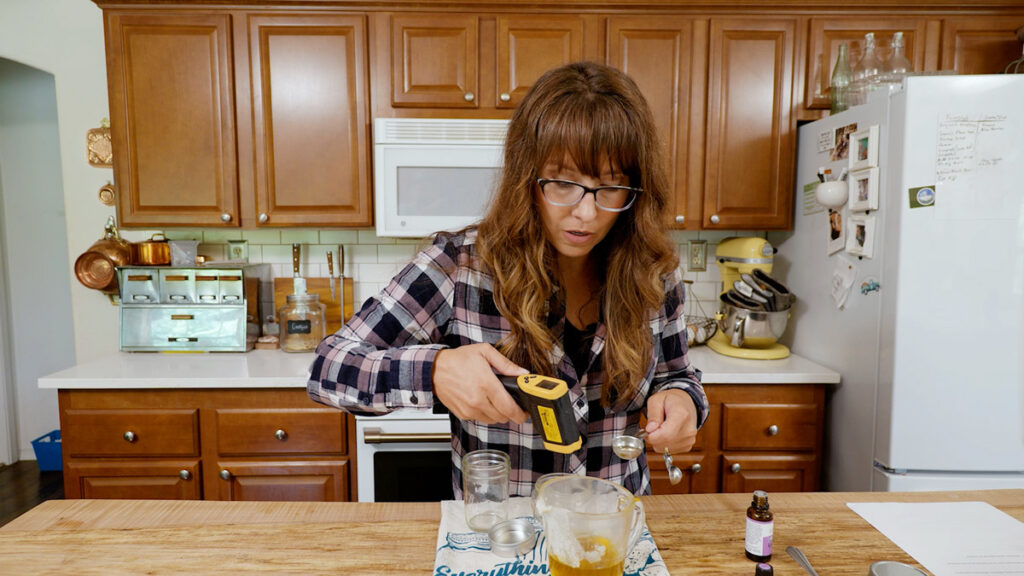
Step 3: Carefully remove from the heat and allow to cool slightly before adding essential oils.
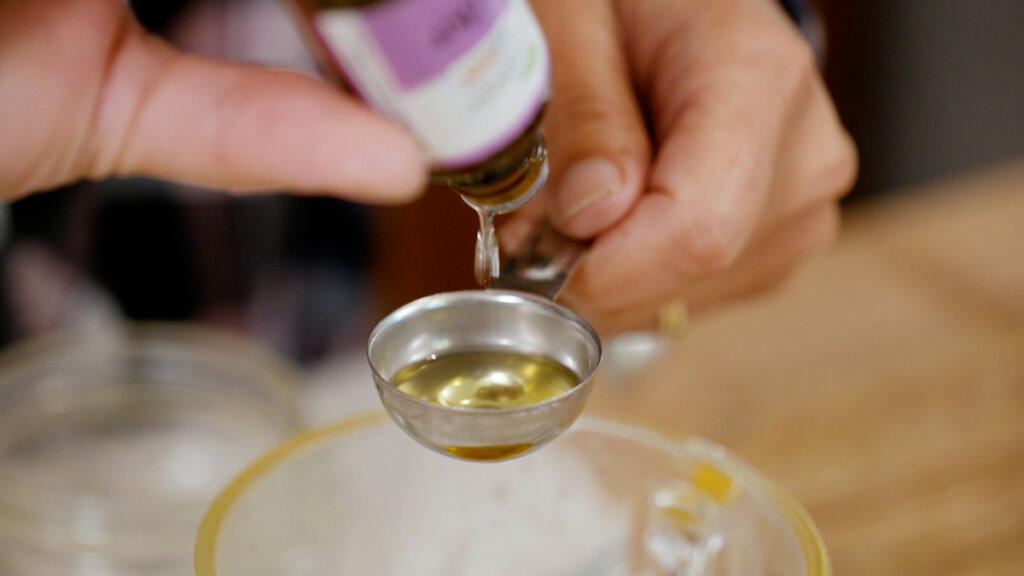
Step 4: While the salve is cooling, measure out your essential oils. Once the salve has cooled to 120°F or cooler, add the essential oils.
Stir essential oils to distribute evenly.
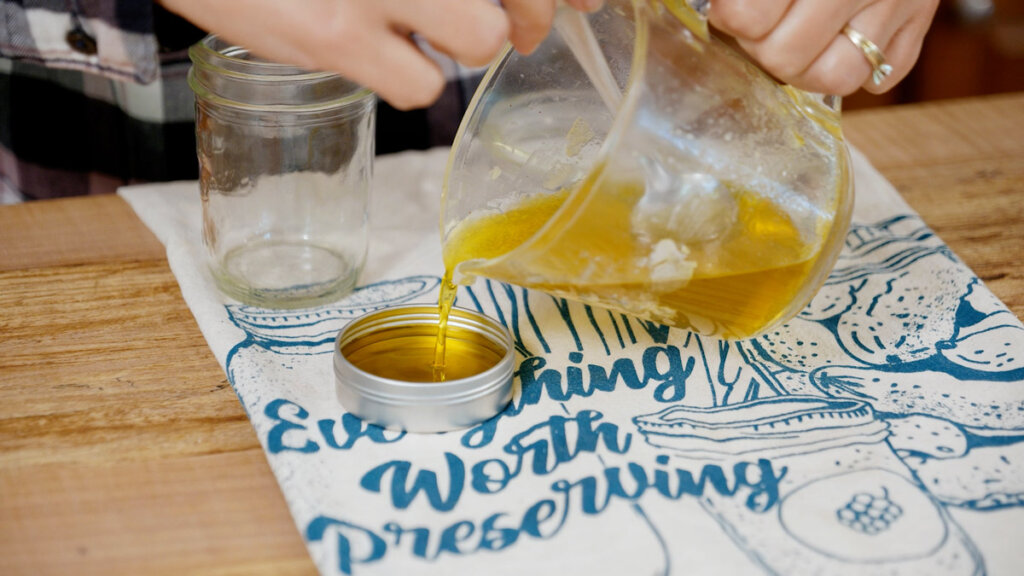
Step 5: Pour the healing salve into your container(s) and let cool.
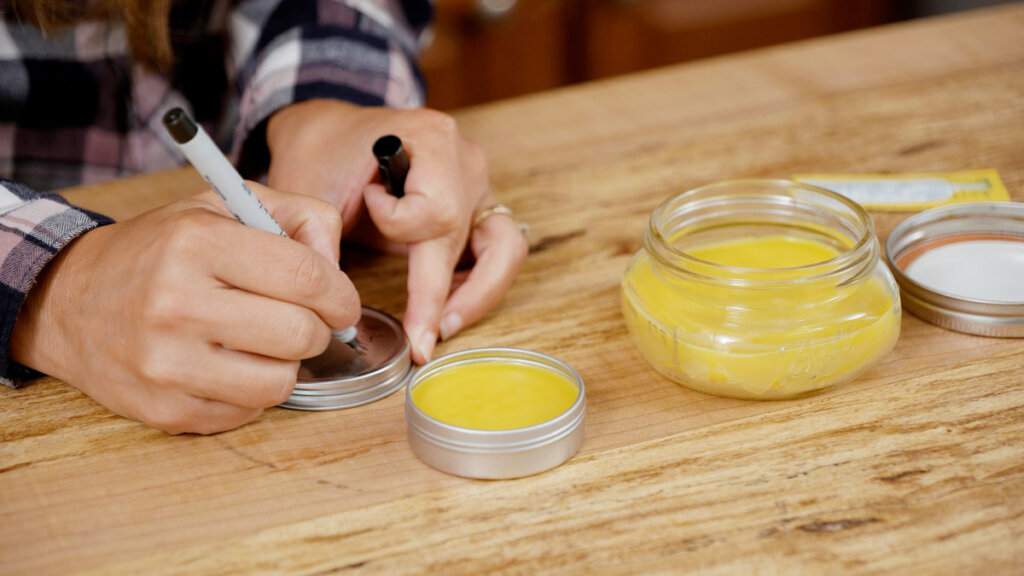
Step 6: Label and date the lid, put the lid on and store in a cool, dark area.
The salve should keep for 12-18 months. Use just as you would Neosporin. Always be sure a wound is thoroughly cleaned before applying healing salve.
A note on dilution: It's important that we dilute essential oils before putting them on our skin. This homemade antibiotic ointment is for a short period of time, an acute situation, not something I would use as a moisturizer or on a daily basis. We're using 15 drops of essential oil per ounce of carrier, which is still well below a 10% dilution rate.
Healing Salve Tips
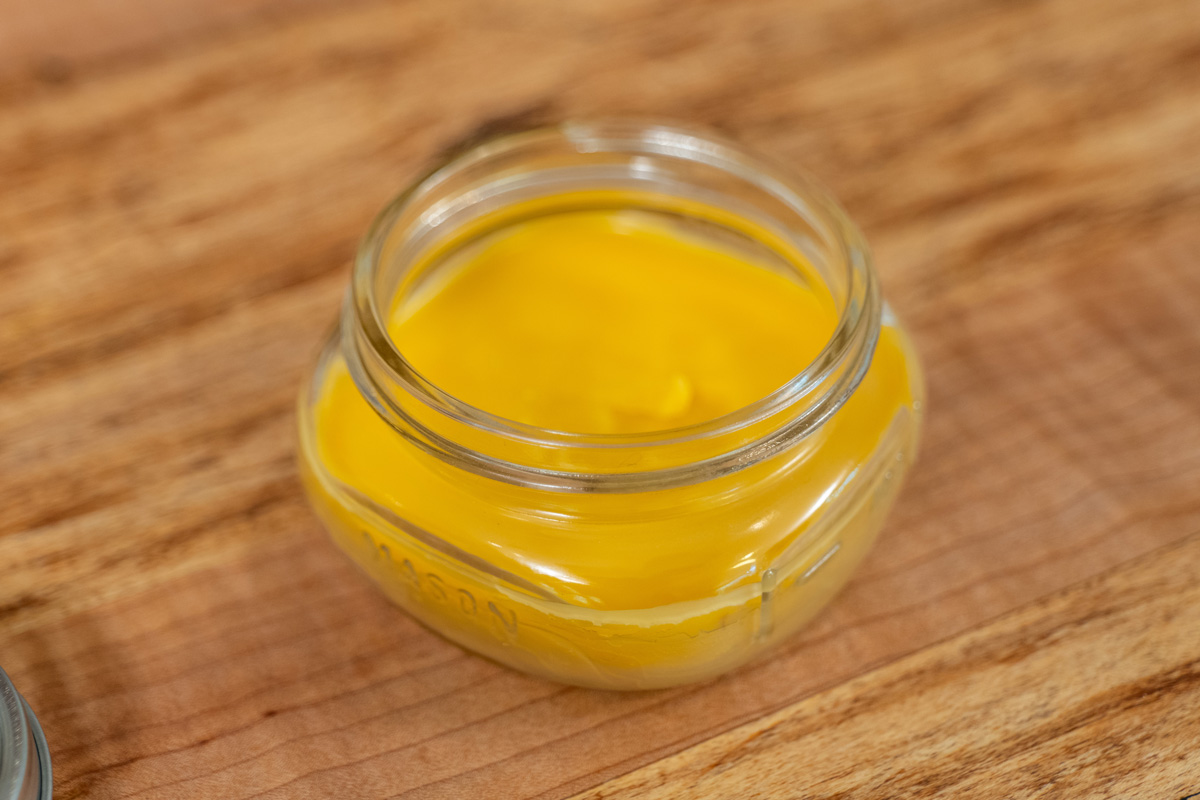
- Adjust to Your Liking: I found the ratio of oil to beeswax in this recipe to be a perfect consistency, soft enough to spread on delicate skin. However, in the heat of summer, I don't want it to get too soft (I like to pack a small tin with me wherever I go, just in case!). You can make it firmer (and less prone to melting) by increasing the beeswax, but I would test a small portion of the salve by placing it on a frozen spoon before adjusting the ratios.
- Scent: This salve smells amazing, proof that not all medicine has to smell bad to be effective! Feel free to adjust the essential oils to your liking. However, do keep in mind we chose the oils listed for their healing properties.
FAQs
A healing salve is a protective and healing ointment, perfect for healing skin abrasions and wounds. It's filled with natural antibiotic oils and is extremely soothing for scrapes, cuts and burns.
Making a healing salve is simple. With a few ingredients like beeswax, herbal oil and essential oils, you can melt them with a double boiler, creating a soothing ointment for healing wounds and abrasions.
This healing salve will last 12-18 months when stored properly. If the salve is exposed to heat or direct sunlight, the healing properties will have a shorter shelf life.
My Herbal eCourse
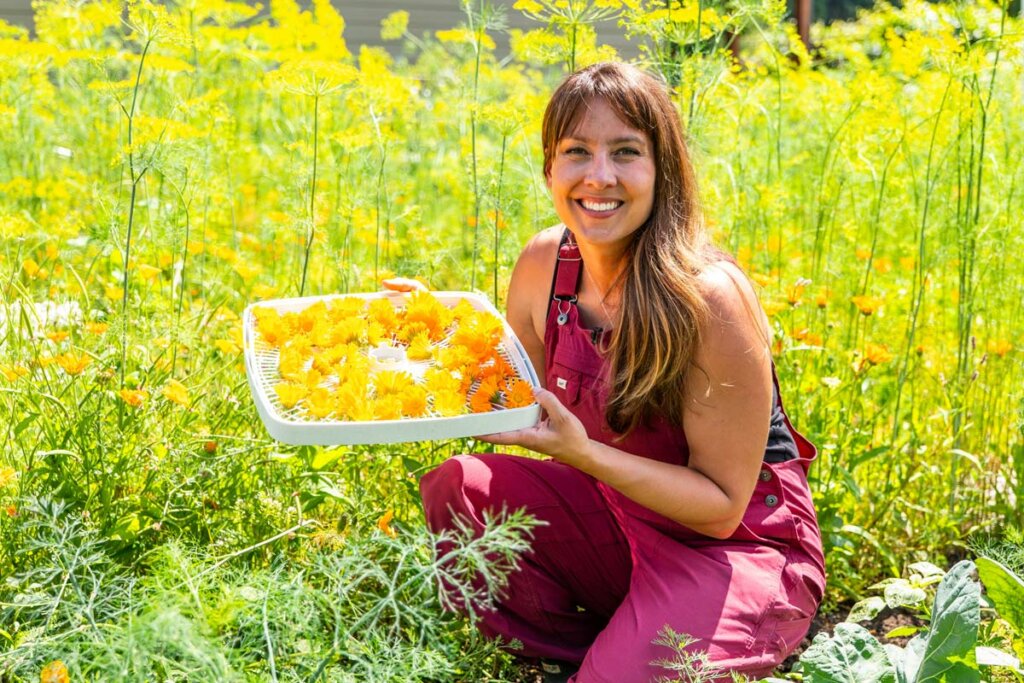
Dive into the power of herbs for first aid, common ailments, and cultivating your own herbal resources.
Gain the confidence of knowing exactly what remedy to make and have a cabinet stocked full of natural medicine for your family to use at a moment’s notice. Grab my Practical Home Herbalism class here.
Other Posts You May Enjoy
Did you make this recipe? If so, please leave a star ⭐ rating and your comments in the recipe card below. Then snap a photo of your homemade healing salve and tag me on social media @melissaknorris so I can see!
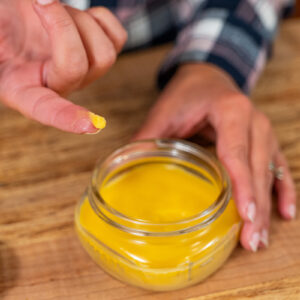
Herbal Wound Healing Salve Recipe
Equipment
- Food Scale
- Heat-Proof Bowl
- Pot for double-boiler
Ingredients
- 1 ounce beeswax
- 1 ounce coconut oil
- 2 ounces herb-infused oil I used calendula oil and lavender oil
- 15 drops tea tree oil
- 15 drops frankincense oil
- 15 drops geranium oil
- 15 drops lavender oil
Instructions
- Using a food scale, weigh out your beeswax and oils.
- Prepare a double boiler. I like to use a metal canning band on the bottom of a pot. Bring the water to just below a simmer.
- Carefully place your heat-safe container with your healing salve ingredients into the pot, making sure the water comes up around the bottom few inches of the container.
- Heat until melted to a liquid.
- Carefully remove from the heat and allow to cool slightly before adding essential oils.
- While the salve is cooling, measure out your essential oils. Try to let it cool to at least 120°F or cooler before adding.
- Add essential oils and stir to distribute evenly.
- Pour the healing salve into your container(s) and let cool.
- Label and date the lid, put the lid on and store in a cool, dark area.
Notes
- The salve should keep for 12-18 months.
- Use just as you would Neosporin.
-
Always be sure a wound is thoroughly cleaned before applying healing salve.
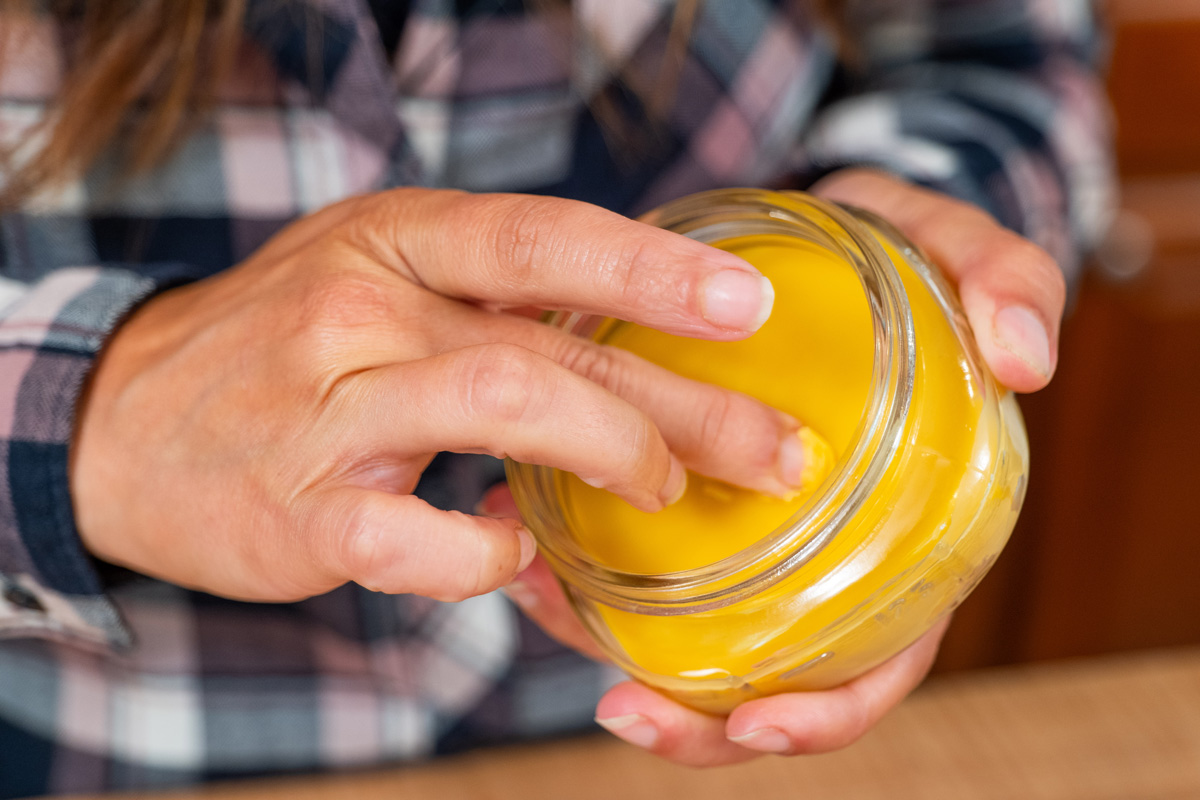
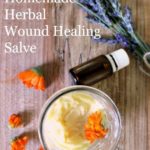
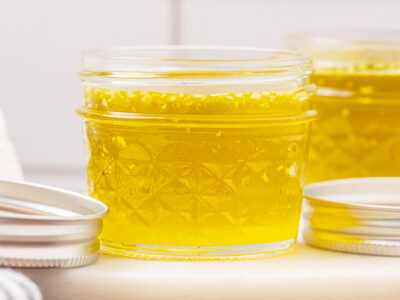
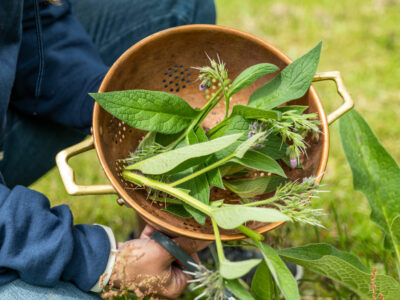
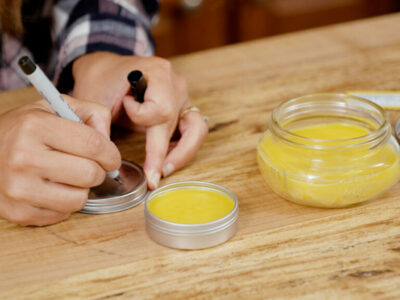
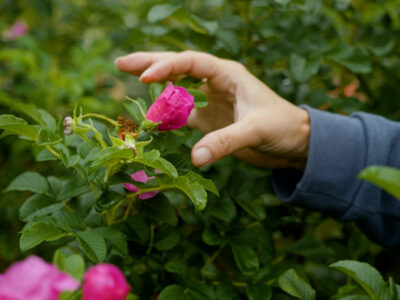
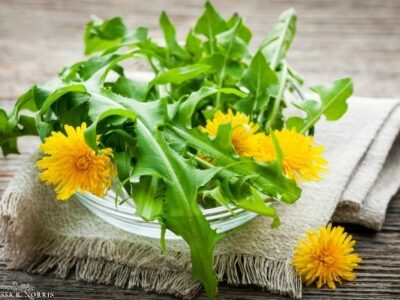
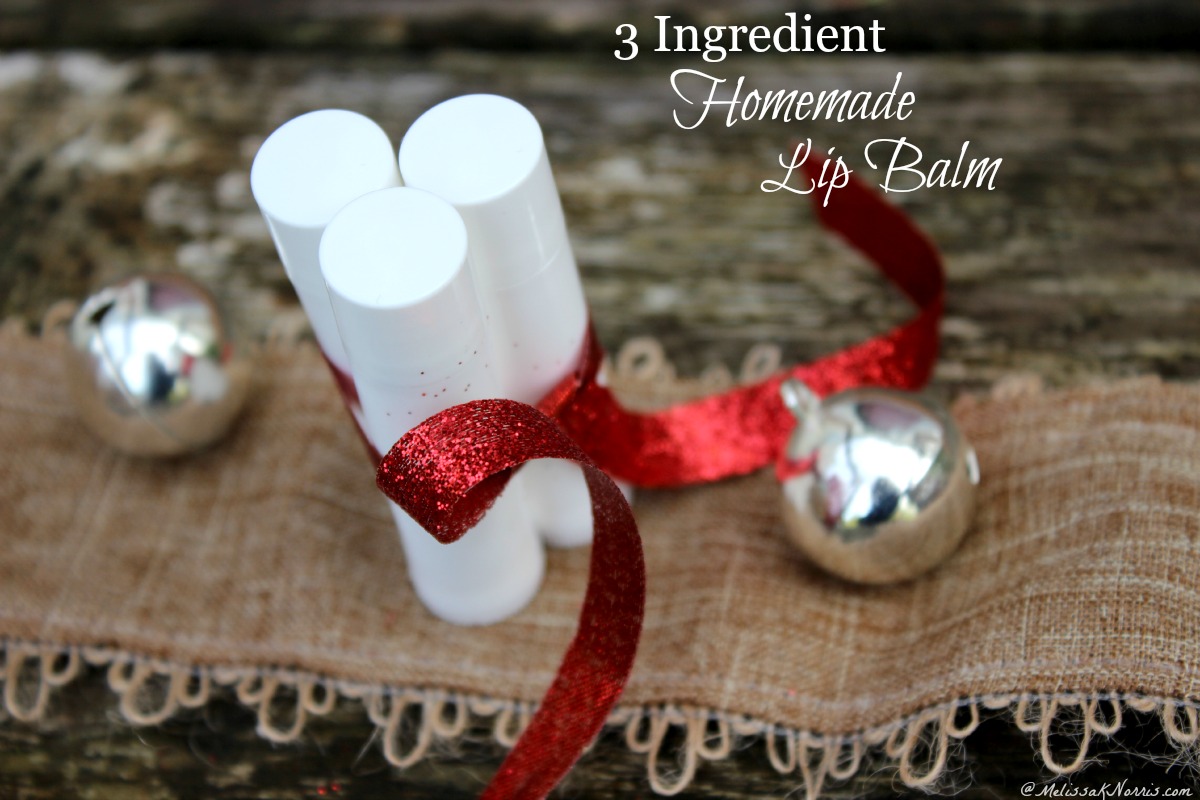
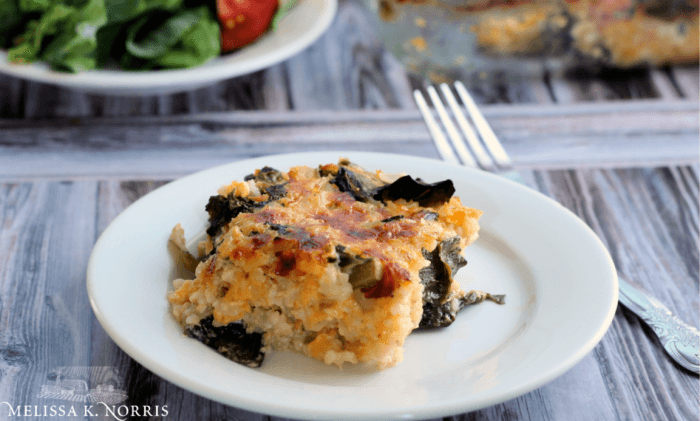
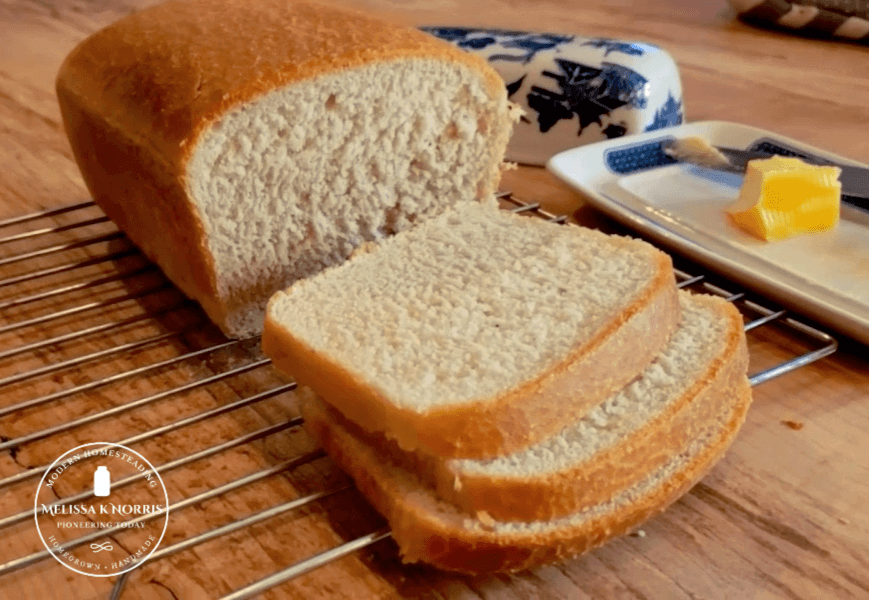
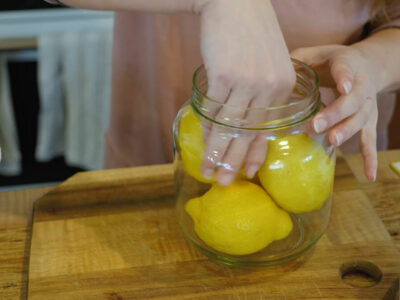
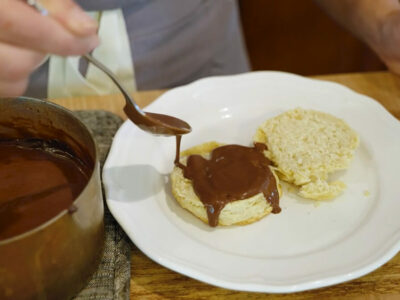


Is this salve safe for use on my dogs?
Is it possible to purchase this from you as I am 82yo and my husband is 91, we get lots of abrasions with our thin skin, by just scraping slightly. I don’t feel like I want to make any, but would love trying it.
I just wanted to clarify that “2 ounces herb-infused oil I used calendula oil and lavender oil” is 1 oz. calendula and 1 oz. lavender oil. Or it could be 2 oz. of each.
Thanks,
Annette.
I finally watched the video. Duh!
Could I use a different oil besides coconut oil in this?
I don’t have the geranium oil or lavender infused oil. Could I just leave it out altogether or should I increase the other EOs and herbal oil?
You can omit it or substitute other essential oils that have skin healing properties
I made this and love it! Such a great add to my medicinal cabinet and smells and feels wonderful!
I did have some questions though, can this be used for baby diaper rash? I did use it and it worked wonders overnight but I know you mentioned not for daily or long term use so can it be detrimental if used too often?
Thank you!
Personally, I don’t think it is safe for a baby with the essential oils added, as they would be used at a higher rate than should be used on babies. If you leave out the essential oils, it should be fine, though! I made a diaper balm with similar ingredients (minus the essential oils) and with a chamomile-infused oil, too, and it worked great!
Hi Leah,
Essential oil use in infants can be done safely but the dilution rate is much greater, for newborn to 3 months the recommended dilution rate is 0.1 – 0.2% and for 3 to 34 months it’s 0.25 – 0.5%. You’d need to adjust the ratios and use less oils than the current recipe.
Hi Melissa,
Thank you for sharing this info.
Not sure if I understand it correctly. How much bees wax and coconut oil do you use?
Hope you’re healing well! Praying Gods favor over you and your health.
Again, Thank you, Judith
Hi Melissa, thank you for sharing this recipe! I pray it helps in your healing. God is wise in all the plants he has given us.
I was wondering, is there anything you can recommend to replace the beeswax in this recipe? I have an allergy that makes me blister and look like I have a burn when I use it.
Thank you again so much!
I planned to make this but can’t seem to see the actual recipe… what am I missing?
Sometimes you can open in a new browser or shut your computer down and restart it and the ‘glitches’ will fix themselves. Here is what I see and of course it won’t copy and paste the way it actually is….
Herbal Wound Healing Salve Recipe
This herbal wound healing salve recipe is one every medicinal herb cabinet should have. Perfect for healing skin abrasions, filled with natural antibiotic oils, and extremely soothing for scrapes, cuts, burns and other wounds.
Prep Time
10minutes mins
Active Time
10minutes mins
Total Time
20minutes mins
Keyword: DIY Neosporin, Healing Salve, Wound Healing Salve Yield: 0.5 cup Author: Melissa Norris
Equipment
Food Scale
Heat-Proof Bowl
Pot for double-boiler
Materials
1 ounce beeswax
1 ounce coconut oil
2 ounces herb-infused oil I used calendula oil and lavender oil
15 drops tea tree oil
15 drops frankincense oil
15 drops geranium oil
15 drops lavender oil
Instructions
Using a food scale, weigh out your beeswax and oils.
Prepare a double boiler. I like to use a metal canning band on the bottom of a pot. Bring the water to just below a simmer.
Carefully place your heat-safe container with your healing salve ingredients into the pot, making sure the water comes up around the bottom few inches of the container.
Heat until melted to a liquid.
Carefully remove from the heat and allow to cool slightly before adding essential oils.
While the salve is cooling, measure out your essential oils. Try to let it cool to at least 120°F or cooler before adding.
Add essential oils and stir to distribute evenly.
Pour the healing salve into your container(s) and let cool.
Label and date the lid, put the lid on and store in a cool, dark area.
Notes
The salve should keep for 12-18 months.
Use just as you would Neosporin.
Always be sure a wound is thoroughly cleaned before applying healing salve.